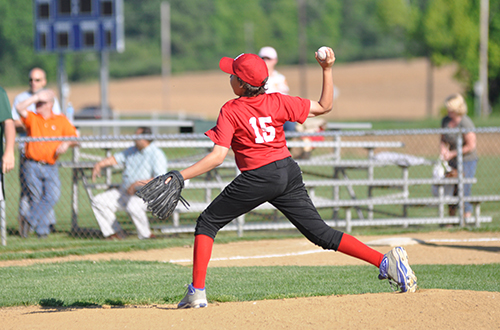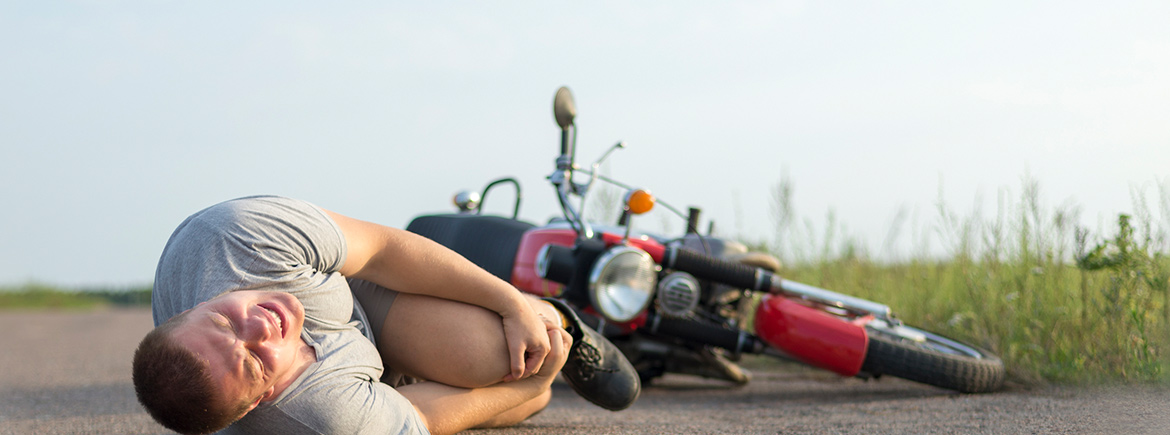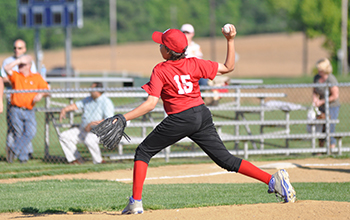
Baseball is The Great American Pastime that improves physical fitness and teaches team skills. Unfortunately, youth baseball is often marred by preventable injuries. Learn about the most common shoulder and elbow injuries in baseball and the prevention strategies to keep your young athletes safe on the diamond so they can enjoy the game for many years to come.
Shoulder Injuries
- Little League Shoulder: This is a stress fracture that runs along the growth plate of the upper arm bone (humerus) involving the cartilage, but not the bone.1 It is caused by excessive throwing.
- Rotator Cuff Strain: This is an inflammation or tear of the tendons that attach the rotator cuff muscles to the shoulder blade.
- Internal Impingement: This is a pinching or rubbing of the rotator cuff and labrum (a ring of cartilage that surrounds the shoulder socket) during the late cocking and early acceleration phases of throwing.
- SLAP or Labral Tear: This is a tear or detachment of the labrum from the shoulder socket, which can affect the stability and function of the shoulder.
Elbow Injuries:
- Medial Epicondyle Injury: This is an injury of the bony prominence on the inner side of the elbow, where the flexor muscles of the forearm attach.
- Ulnar Collateral Ligament Injury: Also known as Tommy John injury, this is an injury of the ligament that stabilizes the elbow joint on the inner side.
- Ulnar Neuritis: This is an irritation or compression of the ulnar nerve, which runs along the inner side of the elbow and supplies sensation and movement to the hand.
Prevention Strategies
The best way to prevent shoulder and elbow injuries in youth baseball is to follow some simple guidelines, such as:
- Warm up properly before throwing, with dynamic stretches and exercises that activate the shoulder and elbow muscles.
- Follow the recommended pitch counts and rest periods for your age group, and avoid pitching on consecutive days.
- Learn and practice proper throwing mechanics, with the help of a coach or a physical therapist.
- Vary your types of pitches to avoid overworking the same tendons and ligaments.
- Strengthen and stretch your shoulder and elbow muscles regularly, with exercises that target the rotator cuff, scapular stabilizers, forearm flexors and extensors, and wrist pronators and supinators.
- Seek medical attention from an expert if you experience any pain, swelling, or loss of function in your shoulder or elbow. Do not try to play through the pain, as this can worsen the injury and delay the recovery.
If your athlete has experienced an injury, an orthopedic surgeon can create a treatment program to help get them back in the game. Dr. DiPaolo is fellowship-trained in hand and upper extremities and specializes in the treatment of shoulder and elbow injuries.
Reference:
1. https://www.ncbi.nlm.nih.gov/pmc/articles/PMC8330489/
Dr. Daneca DiPaolo is a highly-skilled, board-certified orthopedic surgeon located in Grenada, Mississippi. She offers the latest orthopedic techniques and provides quality, compassionate, state-of-the-art orthopedic care.









